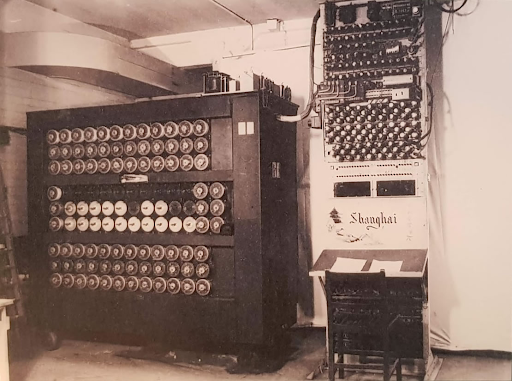New “modern intelligence” technologies such as signals, telegraphy, and radios emerged at the beginning of the 20th century. They quickly became indispensable, especially in wartime, where they gave significant strategic advantages to military forces. But until recently, we underappreciated the significance of the once-obscure role intelligence played in WW2, especially for the “Big Four” Allies (the United States, Soviet Union, United Kingdom and China).
‘Often intelligence is a winning factor.” - John Ferris, The Cambridge History of the Second World War.
However, the most interesting take-away is that technologies born of the war planted the seed for Artificial Intelligence as a concept. The appearance of AI can be traced back to the work of cryptographers during World War II, who used early computing machines to crack military codes. The appearance of AI can be traced back to the work of cryptographers during World War II, who used early computing machines to crack military codes.
The Enigma and the Bombe
Every country involved in World War II had to encode its military communication to protect vital information from enemy forces. The Enigma Machine used by the Germans at that time was an electromechanical device used to encrypt and decrypt messages. Operators would input plaintext messages on the keyboard, and the machine would encipher the message by illuminating a corresponding letter. The encoded message would then be transmitted, typically via radio. The algorithm would constantly change, so each keystroke would result in a new encryption pattern, which made the Enigma especially complex to crack.
To counteract Enigma algorithms, the brilliant minds at Bletchley Park, including now-renowned Alan Turing developed the Bombe. The Bombe was designed to automate the process of testing possible Enigma rotor configurations to deduce the daily settings. It worked by going through millions of rotor settings of the Enigma machine to determine which composition was used to encrypt a message.
But how was this code-breaking machine a predecessor to modern AI?

Breaking the Enigma cipher involved identifying patterns in ciphertext to deduce the underlying encryption keys. Modern neural networks, particularly in deep learning, excel at recognising patterns in complex datasets. Image and speech recognition, genomics, and medical imaging are all fields where we use trend detection nowadays.
Alan Turing’s Bombe is considered to be an early example of a deterministic (predictable) finite automaton (DFA), which is a theoretical model of computation that processes input step by step (ciphertext), transitioning between predefined states (in his case, rotor positions) according to a set of rules. Bombe's operation highlighted the essence of algorithmic problem-solving and showed the potential of automation, by minimising human error and speeding up repetitive tasks, both now the core principles of AI.
The Turing Test
The lessons learnt from Enigma’s cryptanalysis then got Turing thinking about intelligence. His well-known 1950 paper, “Computing Machinery and Intelligence,” posed the provocative question, “Can machines think?”. He proposed the Turing Test, a standard to determine whether the machine intelligence can be distinguished from the human one. The original Turing Test is set out this way:
- Three participants, human evaluator, human respondent and a machine.
- After some dialogue, the evaluator will have to decide whether they are interacting with a machine or a human.
- If the machine succeeds in deceiving the evaluator, it has passed the Turing Test.
The principles of the Turing Test have sparked divergent evaluations over the past decades. Critics today argue that machines might pass the Turing Test by simply mimicking human-like responses without needing to demonstrate any thought or consciousness. So, they say, passing the Turing Test does not mean that these machines have human-like intelligence; rather, it is overly focused on language, and cognition cannot be fully captured by text-based communication. There now exist numerous alternatives such as Coffee Test, Visual Turing Test, The Lovelace Test, The Theory of Mind test, that take many other modalities into account such as visual perception, decision-making or even emotional understanding.
Alan Turing and the work of cryptologists during WWII have directed and pioneered the development of modern computing and created out many major ideas, still inspiring works in the Artificial Intelligence field today. However, we are still on a journey to realise how machines evolve. Even current AI models like ChatGPT-4 and Google Bard haven't yet advanced to a point where they can consistently pass the Turing test. In fact, nothing in AI today is even close to meeting the true intent of the Turing Test. The pursuit of creating machines that truly emulate human-like intelligence remains an ongoing challenge.
References
Ferris, J. (2015). Intelligence. The Cambridge History of the Second World War, pp.637–663. doi:https://doi.org/10.1017/cho9781139855969.027.
Dolan, J. (2023). Is the Turing Test Outdated? 5 Turing Test Alternatives. [online] MUO. Available at: https://www.makeuseof.com/is-turing-test-outdated-turing-test-alternatives/.
